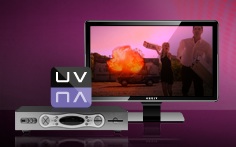
After more than 40 years of operation, DTVE is closing its doors and our website will no longer be updated daily. Thank you for all of your support.
UltraViolet can help open multi-device market, says Sony CTO
 The UltraViolet initiative to enable consumers to access content from a cloud-based digital locker on multiple devices is well-positioned to solve most of the problems associated with supporting multiscreen delivery in a secure way, according to Spence Stephens, chief technology officer of Sony Pictures Entertainment, which supports the initiative.
The UltraViolet initiative to enable consumers to access content from a cloud-based digital locker on multiple devices is well-positioned to solve most of the problems associated with supporting multiscreen delivery in a secure way, according to Spence Stephens, chief technology officer of Sony Pictures Entertainment, which supports the initiative.
Speaking at a conference on multi-network solutions organised by content security provider Verimatrix at the NAB show in Las Vegas yesterday, Stephens said that UltraViolet was flexible enough to support most of the business and usage models that currently can be envisaged.
“I think it’s adaptive to different business models. We started with electronic sell-through, but it could be extended to streaming if that’s required,” said Stephens. “I think it addresses many of the questions that users have about content.”
Stephens said that UltraViolet could help combat piracy by improving the consumer experience, but it also gave consumers security about storing digital content that could boost the electronic sell-through market. “This is built around the notion of interoperability. Consumers are concerned about buying content because they think they might be restricted to one brand of device and are concerned about what happens if their hard drive crashes,” he said. One advantage of Ultraviolet, he said, was that consumers can copy content to devices with different DRMs, because content providers must support all DRMs within UltraViolet. Because UltraViolet digital lockers are cloud based, it allows users to download content they have acquired again from the cloud if their hard drive loses the content. Stephens cited the example of Sony’s own Crackle service as they type of service that could more easily be developed if UltraViolet takes off. Crackle from Sony is now available across a range of devices, delivered in the form of an over-the-top on-demand channel. “This is what one of the types of next generation channels will look like,” said Stephens.


